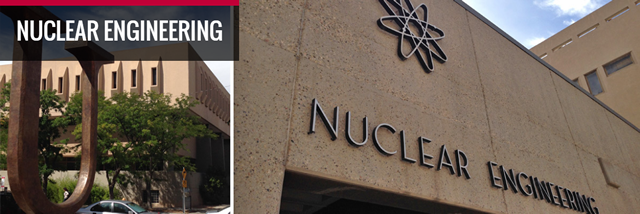
Nuclear Engineering ETDs
Publication Date
12-16-1994
Abstract
In a nuclear thermal rocket engine, the propellant gas can be varied independent of the peak chamber temperature. Startup and shutdown times can be varied over a wide range due to this uncoupling of the energy source from the working fluid. Therefore, in the early stages of nuclear rocket engine development. a study of the impact of the engine design on control strategies and systems was conducted. In order to define what is required in terms of engine thrusting times. this study focused on the thrust requirements for a Reusable Orbital Transfer Vehicle (R0TV).
Three nuclear rocket designs were used to compare startup control strategies. The three designs were the NERVA (nuclear engine for rocket vehicle application) small engine, wire core, and particle bed reactors. These three reactors were chosen to represent the spectrum of possible solid core reactor types which had been considered by NASA (National Air and Space Administration) for the Space Exploration Initiative.
Models exist in the literature for both the NERVA small engine and particle bed reactors. A comparable model of the wire core reactor was unavailable. Therefore, prior to assessing the impact of nuclear rocket engine design on control strategies. modeling of the wire core reactor was performed.
Development of a computer code that modeled the physical phenomena of a nuclear rocket engine startup was required to compare startup strategies for the three reactor types. The STRTUP computer code which was developed, modeled the important time-dependent effects that occur in a fission reactor as a result of the physics of fission.
Also modeled by the code were the core heat transfer process, a turbopump. and reactivity feedback effects. In the derivation of the non-dimensional Smith-Stenning equations which were coded into the STRTUP computer code, response time constants were defined for reactor power. delayed neutron precursor density, core outlet temperature, and core inlet pressure. The reactor power and core outlet temperature response time constants exhibited the greatest variance between the three reactors. When comparing the startup simulation results between the three reactor models, it was found that the following parameters varied significantly as a result of differences in engine design and control strategies:
a. Startup response time for power level, reactor outlet temperature, and turbopump outlet pressure
b. Propellant reactivity feedback effects
c. Temperature reactivity feedback effects
d. Control drum span startup requirement
e. Control drum reactivity insertion and removal rate requirement.
However. from a reactor kinetics and engine controllability standpoint there was only a small difference found between the NERVA and particle bed reactors. The wire core exhibited a substantial difference with the other two designs primarily due to variance in the startup response time for power level and propellant reactivity feedback effects.
Document Type
Dissertation
Language
English
Degree Name
Nuclear Engineering
Level of Degree
Doctoral
Department Name
Nuclear Engineering
First Committee Member (Chair)
Norman Roderick
Second Committee Member
Patrick McDaniel
Third Committee Member
Arzi Razani
Fourth Committee Member
Mohamed El-Genk
Fifth Committee Member
Eric Haskin
Recommended Citation
Lambright, John A.. "Impact of Nuclear Rocket Engine Design on Control Strategies." (1994). https://digitalrepository.unm.edu/ne_etds/92


